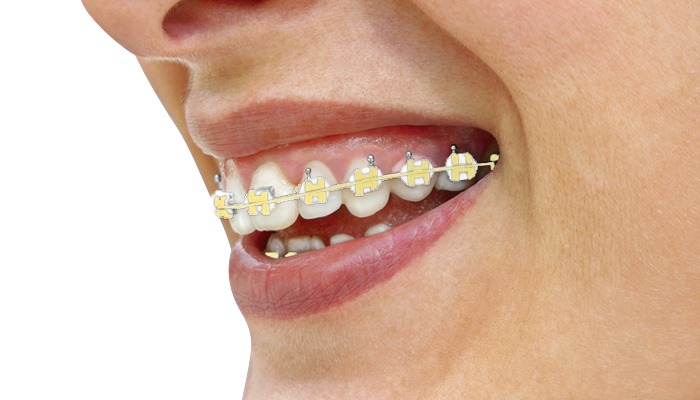Types of Braces

With today's technology, patients now have more options when it comes to wearing braces. While traditional metal braces are still widely used, clear braces, lingual braces and self-ligating braces are becoming increasingly popular along with clear appliances.
Please use the menu to learn more about the types of braces we offer, and speak with your orthodontist to determine which appliance is right for you.

Ceramic braces move teeth just as efficiently as metal braces, except the brackets are clear, so they are less noticeable. They are most popular with adult patients due to their cosmetic appeal. The only drawbacks to ceramic braces are that they are more fragile, and the elastic ties can discolor between orthodontic visits.

The Invisalign system is a series of clear overlay templates, or aligners, that have been generated by computer simulation to gradually move teeth. This system is available to patients with certain orthodontic bite problems.

The most common type, metal braces are made of high-grade stainless steel. The brackets, which are bonded to the front of each tooth, are connected by the archwire, which helps guide the teeth into the correct positions. Today's metal braces are smaller, more comfortable and more attractive.
Orthodontic Hygiene

Now that you have your braces in place, it's even more important to maintain good hygiene during your treatment. Braces, wires, bands and retainers can trap food particles and make it difficult to brush or floss away plaque. Careful brushing and flossing, preferably after every meal and snack, is the best way to prevent plaque build-up, tooth decay and gum disease.
You can learn more about proper orthodontic hygiene by clicking on the buttons for each particular topic.
- Step 1
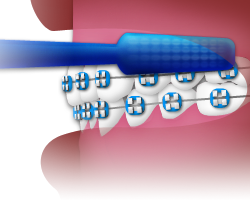
Start with the outside of the teeth, with the brush flat against the surface of teeth. Use circular, vibrating motions.
- Step 2
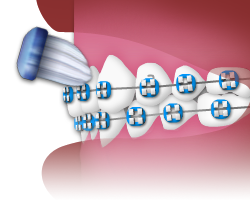
When brushing your top teeth, clean the area between the gums and braces by angling the brush downward. Keep moving in small, circular motions.
- Step 3
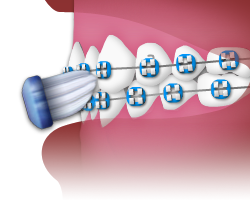
When brushing the lower teeth, angle the brush upward.
- Step 4
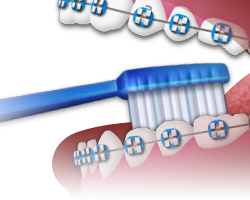
Carefully brush the chewing surfaces of both the upper and lower jaw.
- Step 5
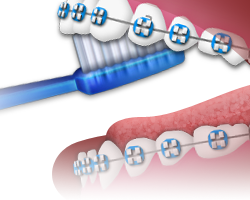
Finish by brushing the inside of the teeth.
- Step 1

Floss at least once a day. You need to pull the floss under the archwire with a floss threader. Start by pulling floss through the threader.
- Step 2
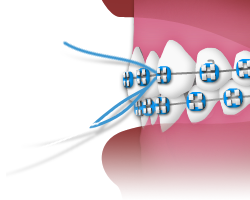
Push the end of the floss threader under the archwire and pull the floss through.
- Step 3
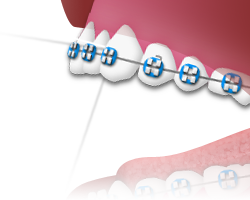
Pull the floss up between the teeth and gently move it up and down the side of both teeth. Remember to move it up all the way under the gums.
- Step 4
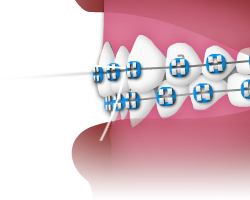
Pull the floss out and use a different section of it for the next tooth.
- Step 1
- Step 2
- Step 3
- Step 4

When you're finished brushing and flossing, rinse your mouth thoroughly with water or an antiseptic dental rinse. An antiseptic rinse can help minor gum inflammations and irritations from orthodontic appliances, as well as cleanse canker sores and other minor wounds. It can also remove debris or irritants from the mouth, speeding up your body's natural healing process.

Using an interdental toothbrush (proxabrush) can help keep your teeth, braces and gums clean and healthy. Use this device slowly and carefully to clean under orthodontic wires and around braces, taking care not to damage your braces.

Since retainers can accumulate food particles and plaque, brush your retainer every time you brush your teeth. Also soak your retainer once a day in a glass of room-temperature tap water with a denture-cleaning tablet. This will help prevent plaque build-up and oral infections and keep it tasting better. DO NOT use hot water, which can distort the appliance.

During your first week in braces, stick to a soft food diet until any discomfort subsides. Afterward, you can eat just about anything while wearing braces, with a few exceptions.
You should avoid hard foods like ice and pizza crust, as well as sticky foods such as caramels and chewing gum, since they can damage wires and brackets. Also minimize sugary foods like ice cream and cookies, and reduce sugared drinks like soda or milk to once a day.
Parts of Braces
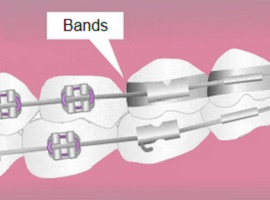
Bands are a ring of metal which fit around the molars and sometimes premolars. The bands are selected from a range of sizes in order to find the tightest-fitting band. The bands are sealed into position using dental cement that contains fluoride to prevent any decalcification during treatment.
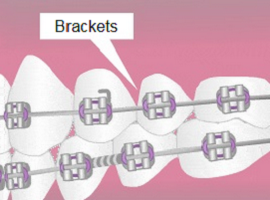
Brackets hold the archwire against each tooth, and the archwire fits into a slot in the bracket. Brackets may be attached directly to each tooth or to a band.
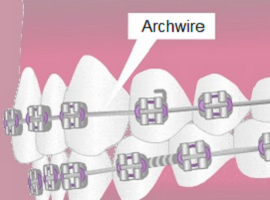
The main wires, known as archwires, are shaped specifically to fit around the arch of the teeth. The archwire fits into a slot in each bracket. Teeth are moved by the pressure that is applied by the braces, and that pressure comes from the archwire, which guides tooth movement.
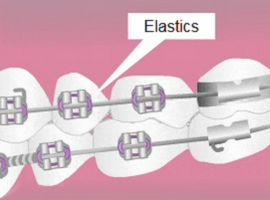
An elastic is the tiny rubber ring that ties the archwire into the bracket.
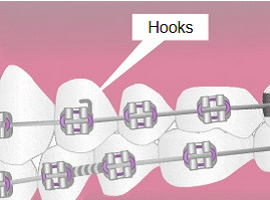
Hooks are small attachments on brackets that are used to attach rubber bands for added pressure.
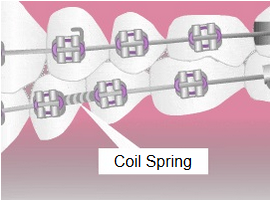
A coil spring fits over the archwire between two brackets. It pushes the two brackets apart, creating space between those two teeth.


